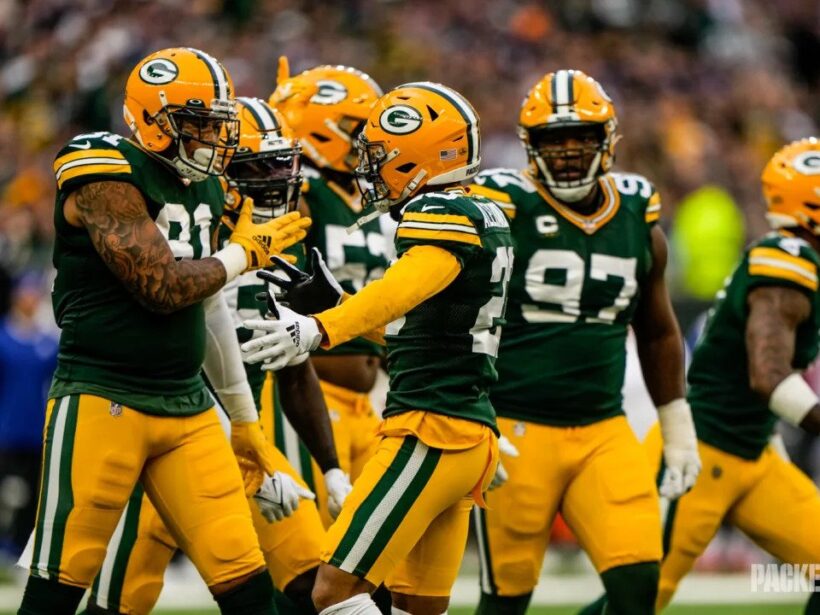The Packers run defense has been bad for about as long as I can remember. There’s a Ryan Pickett season here and a Dom Capers playoff game there with a plus run D, but otherwise it’s been Swiss Cheese for decades. And it’s on purpose.
The same way Gute picks offensive linemen who are light and agile for pass blocking, he picks defensive linemen who can collapse the pocket and rush the passer. Even when he drafts a nose tackle in the first round, it’s one of the few pass rush first nose tackles in the league.
That said, there are a few ways the team can try to improve last year’s disastrous run defense next season.
Personnel
The obvious personnel answer would be to acquire 340 pounders on the d line to clog gaps, linebackers moonlighting at safety to play in the box, and slow linebackers with neck guards to blow up fullbacks. That ain’t happening. What the team can do is adjust how it uses its current personnel or potential vet minimum additions.
Darnell Savage and Adrian Amos weren’t cutting it as downhill quarters safeties. In the Fangio system, safeties need to be a big part of the run defense, coming downhill with their hair on fire to almost create an 8- or 9-man box. Use Anthony Johnson and Rudy Ford at safety, put Savage in the slot where he can run down ball carriers from behind, and let Amos move on.
Formation
The formation/front that I’ve had in my head since the draft is “Mint.” Mint is a version of the TITE fronts that you see more on Saturdays than Sundays. There’s a nose tackle over the center, two down linemen just inside the tackles (called 4is) , one edge rusher, and two off-ball linebackers.
The defense is designed to clog up the middle and force runs outside where quick defensive backs can run down the ball carrier. The Packers used this front in a few games last season after Rashan Gary got hurt when they were trying anything they could to generate pressure.
Each of the three linemen the Packers took in the draft can play the 4i technique and actually generate some pressure on the passer. While Gary is recovering, it gives Joe Barry the ability to slow down the inside run game and potentially get his best pass rushers on the field. Additionally, the front lends itself to creeper pressures and blitzes from the inside linebackers, which we may also see more of this season.
The other formation, which Barry used a lot in 2021 but not as much in 2022 is Penny. This is like Mint, but with two edge rushers and one inside linebacker. It’s easy to picture the defense going from Mint to Penny by moving Quay Walker down to 9-technique. Walker has the athletic profile to be a plus pass rusher from the edge and Campbell was a better linebacker in the penny front by himself than he was in the 2-4-5.
Play Calling
For all the hullabaloo about putting an umbrella on the pass defense and playing cover-4, -6, and -8, the Packers still ran more Cover-3 than any other coverage. Typically Cover-3 and Cover-1 and are better run coverages because one of the safeties moves into the box, but it didn’t really work that way with the Packers because they’d almost always run Cover-3 from a two-safety shell, meaning a safety bad against the run had to try to get down into the box late.
It might be time to bring the safety into the box more often on obvious run downs.
Mike Price is a lifelong Packers fan currently living in Utah. You can follow him on twitter at @themikeprice.
——————

